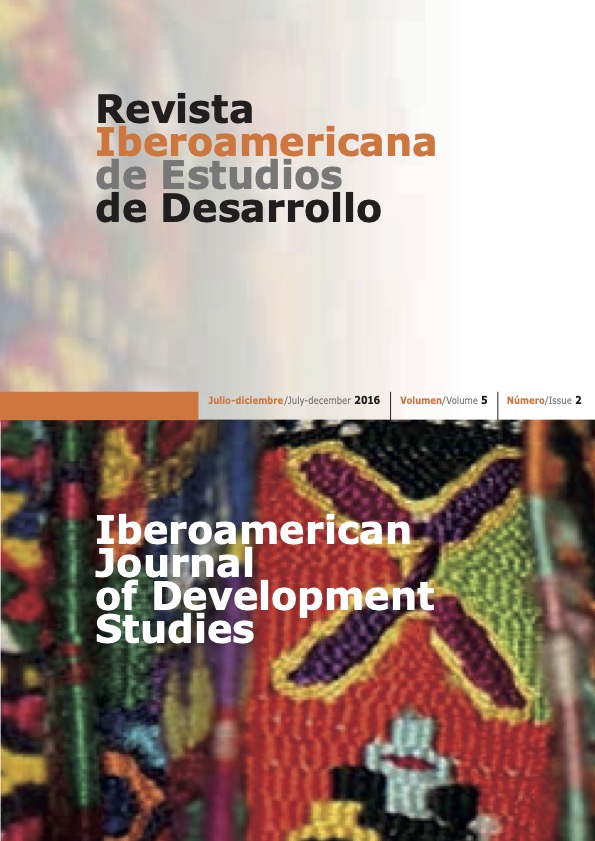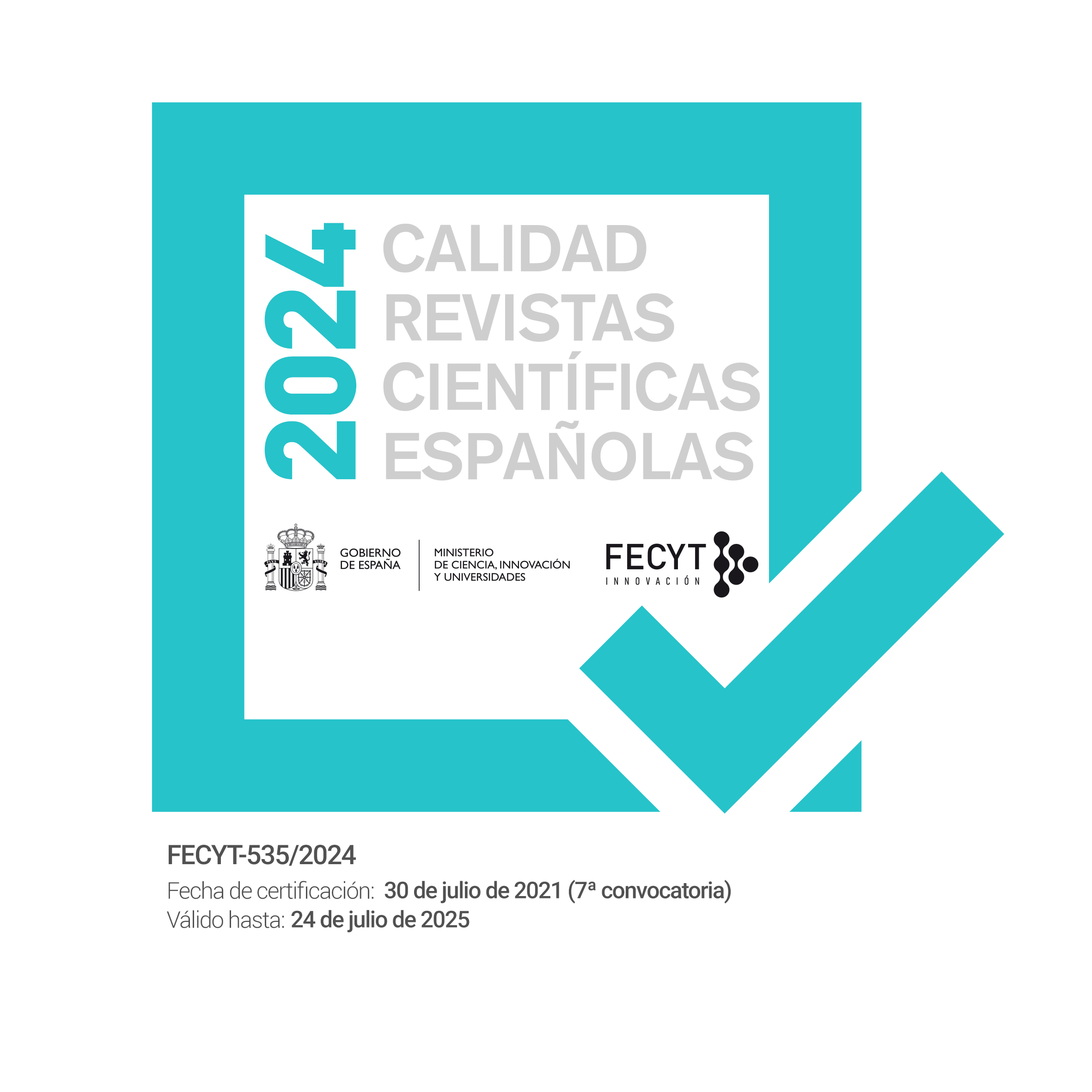On the measurement and use of equality weighted growth
Premio Reedes (Red Española de Estudios del Desarrollo) para Jóvenes Investigadores 2016
DOI:
https://doi.org/10.26754/ojs_ried/ijds.236Palabras clave:
crecimiento económico, desigualdad, ODM, ODS, coeficiente de GINIResumen
Si las economías en desarrollo continúan creciendo entre un 4 y un 8 %, su actual PIB se duplicará entre 2025 y 2034. Para 2030 se habrán alcanzado ingresos por encima de todos los umbrales de pobreza razonables. ¿Predice esto el fin de la pobreza para 2030? Corrigiendo la renta media de la desigualdad y comparando su crecimiento con el del PIB total, este trabajo demuestra analíticamente que depende de cómo se distribuya dicha nueva riqueza. Se confirma que ese será el caso si los modelos de crecimiento se basan en la creación de trabajo y oportunidades para aquellos económicamente menos favorecidos, lo cual, por lo tanto, repercutiría en un aumento de los ingresos. Al aplicarse esto al África subsahariana, los resultados empíricos sostienen que desde 2000 se encuentra con ese patrón de prosperidad distribuida. No obstante, aunque se prevé que durará y se erradicará la pobreza en 2030, este patrón no es sólido para los períodos de crisis ya que parece ser que las personas con menos ingresos llevan la mayor parte de las cargas de recesión.
Descargas
Referencias
CAMERON D, SIRLEAF EJ, YUDHOYONO SB (2013). A new global partnership: eradicate poverty and transform economies through sustainable development. Report of the high-level panel of eminent persons on the post-2015 development agenda, UN Secretariat.
COBHAM A, SUMNER A (2013). Is It All About the Tails? The Palma Measure of Income Inequality. CGD Working Paper 343. Washington, DC: Center for Global Development.
COLLIER P, GUNNING JW (1999). Why has Africa grown slowly? Journal of economic perspectives 13(3):3-22.
DEVELOPMENT ASSISTANCE COMMITTEE (DAC) (2016). International Development Statistics (IDS) online databases. OECD. http://www.oecd.org/dac/stats/idsonline.htm. Last exploration on April 5, 2016.
EASTERLY W (2002). The elusive quest for growth: Economists’ adventures and misadventures in the Tropics. Cambridge: The MIT Press.
EASTERLY W (2006). The White Man’s Burden: Why the west’s efforts to Aid the rest have done so Much ill and so little good. New York: Penguin Press.
EASTERLY W (2008). Hayekian Insights on Development. Cato policy report, Cato institute.
FOSU AK (2015). Growth, Inequality and Poverty in Sub-Saharan Africa: Recent Progress in a Global Context. Oxford Development Studies 43(1):44-59. DOI: 10.1080/13600818.2014.964195.
FOSU AK (2015). Impact of the global financial and economic crisis on development: Whither Africa? Journal of international development 25:1085-1104. DOI: 10.1002/jid.2971.
FUENTES-NIEVA R (2013). Keeping an eye on the have-mores. The broker. Gini, Palma and the median inequality indicator: Sub-debate on measuring inequality. http://www.thebrokeronline.eu/Articles/Gini-Palma-and-the-median-inequality-indicator. Last exploration on July 12, 2016.
GALOR O, MOAV O (2004). From physical to human capital accumulation: Inequality and the process of development. The review of economic studies 71(4):1027-1063.
HAUGHTON H, KHANDKER SR (2009). Hand book on Poverty and Inequality. World Bank.
KAKWANI NC (1977). Applications of Lorenz curves in economic analysis. Econometrica 45.
KLANSEN S. (2012). No, we don’t need an MDG for inequality. The broker. Gini, Palma and the median inequality indicator: Sub-debate on measuring inequality. http://www.thebrokeronline.eu/Articles/Gini-Palma-and-the-median-inequality-indicator. Last exploration on July 12, 2016.
MADDISON A (1995). Monitoring the World Economy. Paris: OECD.
NARAYAN D, PRITCHETT L, KAPOOR S (2009). Moving Out of Poverty: Success from the Bottom Up. World Bank Publications and Palgrave Macmillan.
NARAYAN D et al. (2009). Moving out of poverty: Success from the bottom up. World Bank Publications and Palgrave Macmillan.
PINKOVSKIY M, SALA-I-MARTIN X (2014). Africa is on time. Journal of economic growth 19(3):311-338.
RAMSEY F (1928). A mathematical theory of saving. The economic journal 38(152): 543-559.
RAVALLION M. (2013). Let’s avoid creating a dog’s breakfast of MDGs. The broker. Gini, Palma and the median inequality indicator: Sub-debate on measuring inequality. http://www.thebrokeronline.eu/Articles/Gini-Palma-and-the-median-inequality-indicator. Last exploration on July 12, 2016.
SACHS J (2005). The end of poverty: economic possibilities for our time. New York: Penguin.
SACHS J (2015). The age of sustainable development. New York: Columbia University Press.
SACHS J et al. (2005a). The end of poverty: economic possibilities for our time. New York: Penguin.
SACHS J et al. (2005b). Investing in development: A practical plan to achieve the UN millennium development goals. Technical report, UN Millennium project.
SACHS J, WARNER AM (1997). Sources of slow growth in sub-Saharan economies. Journal of African economies 6(3):335-376.
SEN A (1976). Poverty: An ordinal approach to measurement. Econometrica 44.
SOLOW R (1956). A contribution to the theory of economic growth. The Quarterly Journal of Economics 70(1):66-94.
SOLOW R (2007). The last 50 years in growth theory and the next 10. Oxford Review of Economic Policy 23(1):3-14.
TEZANOS S, QUINONES A, GUIJARRO M (2013). Inequality, aid and growth: macro-economic impact of aid grants and loans in Latin America and the Caribbean. Journal of applied economics 16(1):153-177.
UNITED NATIONS-UN (2006). Doubling aid: Making the «big push» work. New York.
UNITED NATIONS-UN (2015). Transforming our world: the 2030 Agenda for Sustainable Development. A/RES/70/1.
WORLD BANK (2016). World Development Indicators 2016. Washington DC: The World Bank.
Descargas
Publicado
Número
Sección
Licencia
Derechos de autor 2016 Pacifique D. Mongongo

Esta obra está bajo una licencia internacional Creative Commons Atribución-NoComercial-SinDerivadas 4.0.






